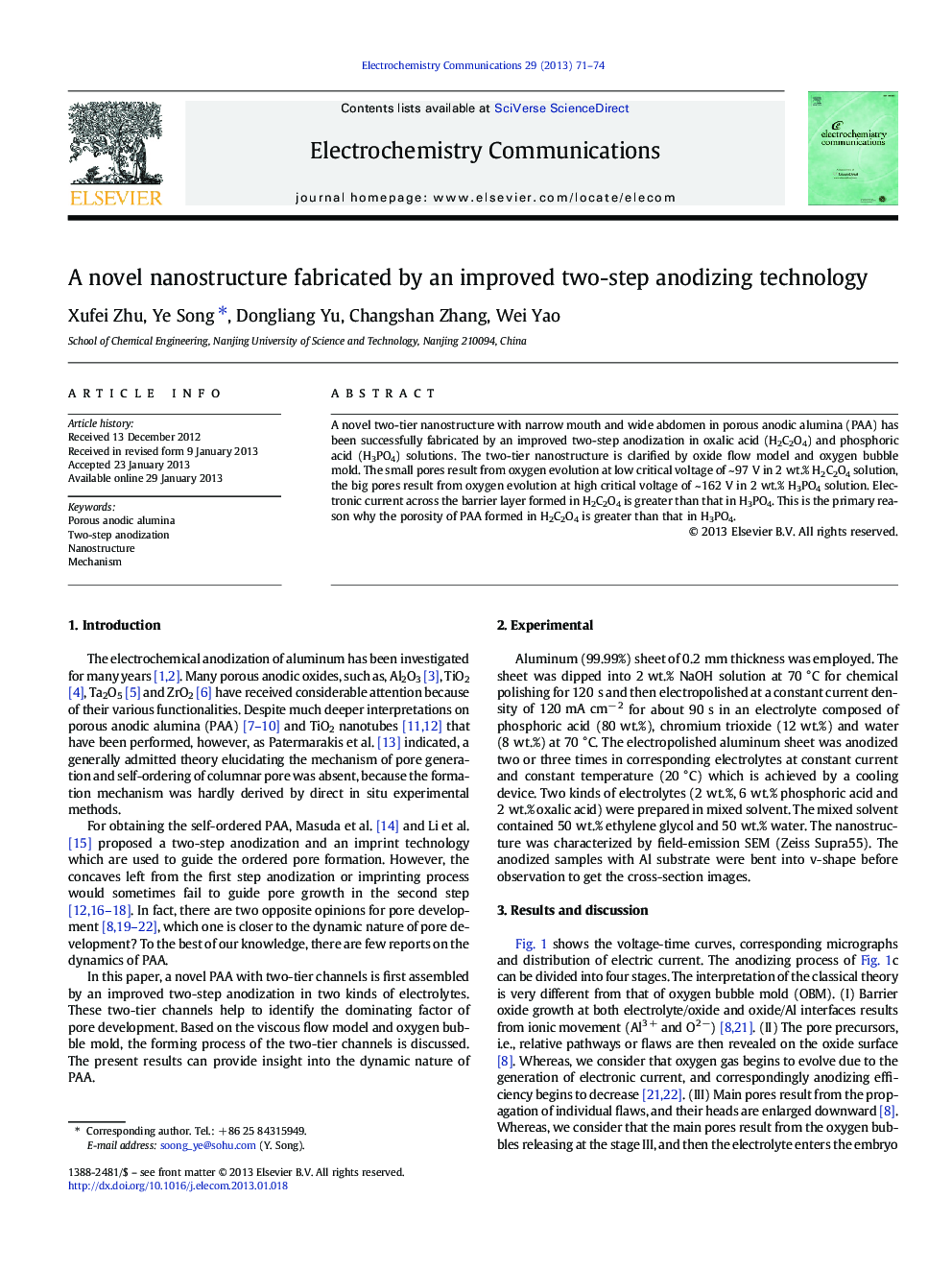| Article ID | Journal | Published Year | Pages | File Type |
|---|---|---|---|---|
| 179514 | Electrochemistry Communications | 2013 | 4 Pages |
A novel two-tier nanostructure with narrow mouth and wide abdomen in porous anodic alumina (PAA) has been successfully fabricated by an improved two-step anodization in oxalic acid (H2C2O4) and phosphoric acid (H3PO4) solutions. The two-tier nanostructure is clarified by oxide flow model and oxygen bubble mold. The small pores result from oxygen evolution at low critical voltage of ~ 97 V in 2 wt.% H2C2O4 solution, the big pores result from oxygen evolution at high critical voltage of ~ 162 V in 2 wt.% H3PO4 solution. Electronic current across the barrier layer formed in H2C2O4 is greater than that in H3PO4. This is the primary reason why the porosity of PAA formed in H2C2O4 is greater than that in H3PO4.
► The interactions between anodizing current and porous structures are presented. ► Total anodizing current in the oxide includes ionic current and electronic current. ► The channel length is proportional to the ionic current rather than total current. ► Ionic current across the oxide formed in H3PO4 is greater than that in H2C2O4. ► Electronic current across the oxide formed in H2C2O4 is greater than that in H3PO4.
